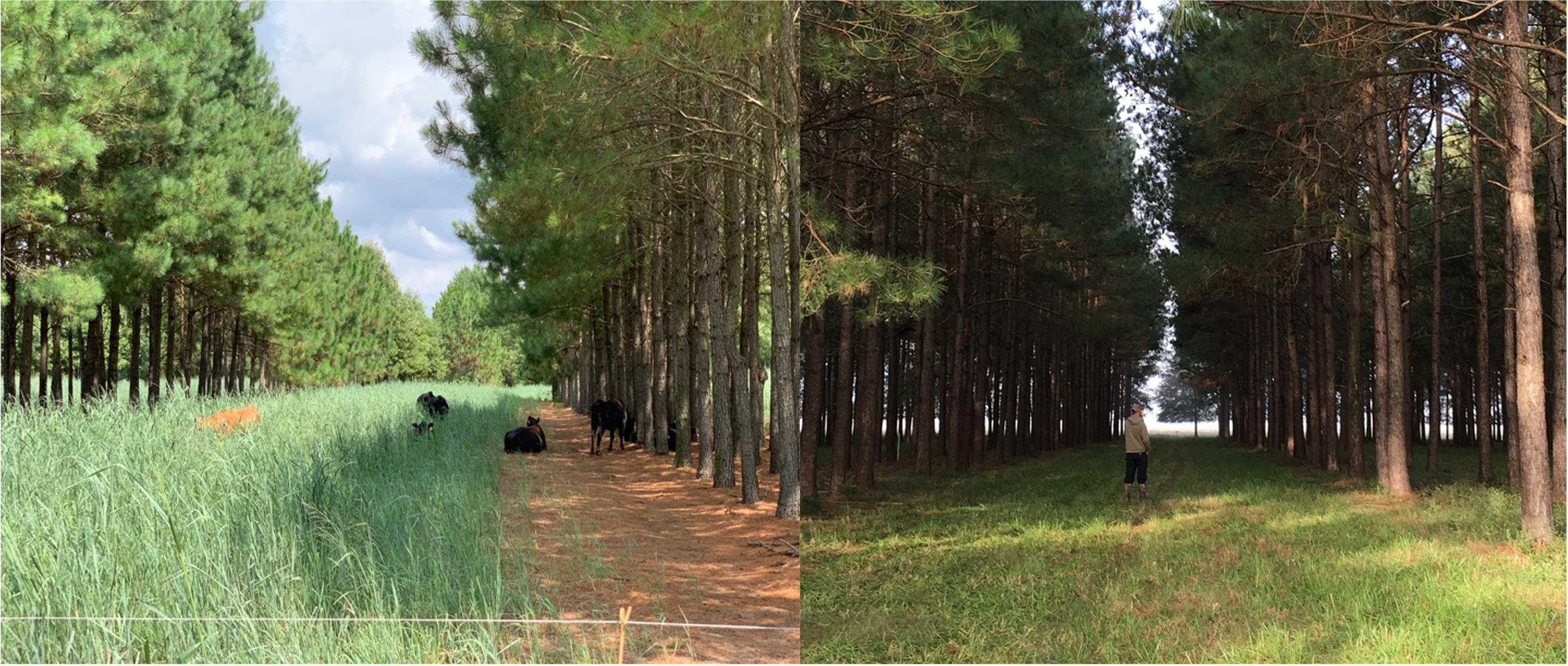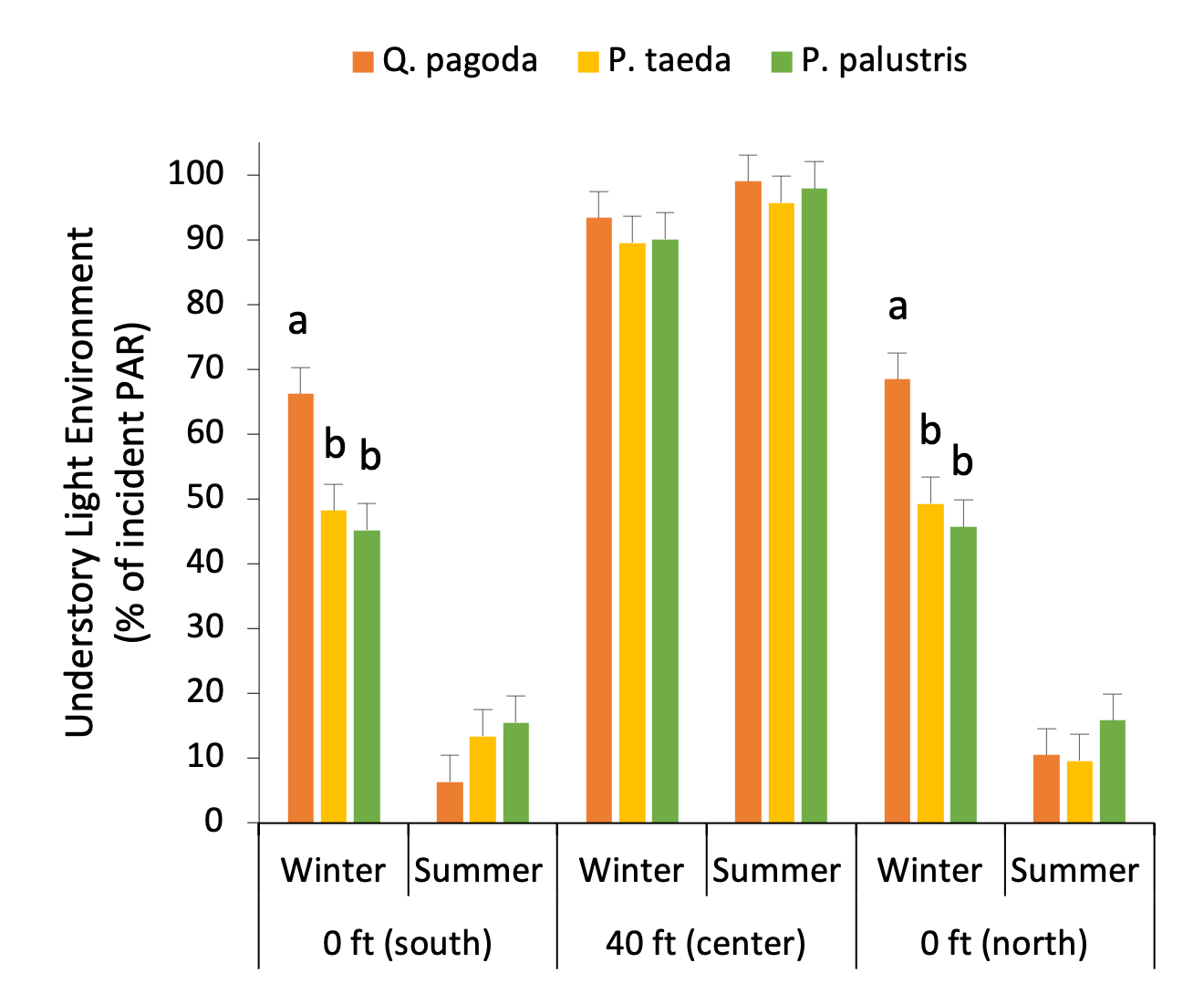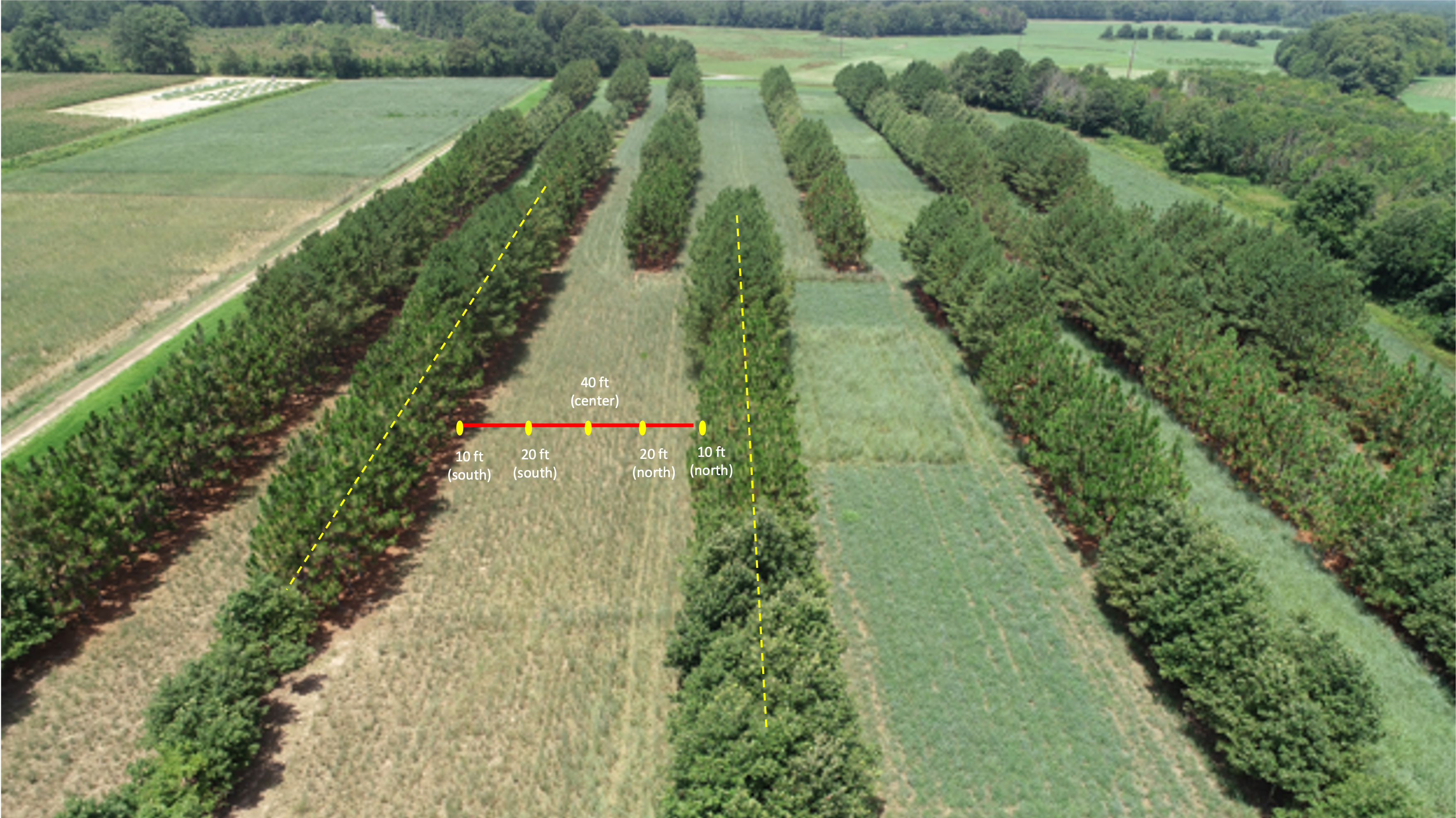Silvopastures in North Carolina, What Have We Learned?
go.ncsu.edu/readext?987432
en Español / em Português
El inglés es el idioma de control de esta página. En la medida en que haya algún conflicto entre la traducción al inglés y la traducción, el inglés prevalece.
Al hacer clic en el enlace de traducción se activa un servicio de traducción gratuito para convertir la página al español. Al igual que con cualquier traducción por Internet, la conversión no es sensible al contexto y puede que no traduzca el texto en su significado original. NC State Extension no garantiza la exactitud del texto traducido. Por favor, tenga en cuenta que algunas aplicaciones y/o servicios pueden no funcionar como se espera cuando se traducen.
Português
Inglês é o idioma de controle desta página. Na medida que haja algum conflito entre o texto original em Inglês e a tradução, o Inglês prevalece.
Ao clicar no link de tradução, um serviço gratuito de tradução será ativado para converter a página para o Português. Como em qualquer tradução pela internet, a conversão não é sensivel ao contexto e pode não ocorrer a tradução para o significado orginal. O serviço de Extensão da Carolina do Norte (NC State Extension) não garante a exatidão do texto traduzido. Por favor, observe que algumas funções ou serviços podem não funcionar como esperado após a tradução.
English
English is the controlling language of this page. To the extent there is any conflict between the English text and the translation, English controls.
Clicking on the translation link activates a free translation service to convert the page to Spanish. As with any Internet translation, the conversion is not context-sensitive and may not translate the text to its original meaning. NC State Extension does not guarantee the accuracy of the translated text. Please note that some applications and/or services may not function as expected when translated.
Collapse ▲Silvopastoral systems can provided multiple ecosystem services – the benefits people obtain from ecosystems –, for example, forage production, wildlife viewing, meat, milk, carbon sequestration. However, delivery of ecosystem services is mediated by specific management practices, environmental conditions, and overall design of the system. A printable version of this article can be found here.
What is a silvopasture?
Silvopastoral systems are a type of agroforestry characterized by the intentional integration and management of trees, forages, and livestock. Silvopastures have been broadly accepted as an integrated approach to sustainable land management, while providing options to mitigate and adapt to climate change. Silvopastures have potential to deliver multiple outputs while helping to diversify farm income. For example, while grazing livestock can generate annual income, tree crops and products (for example, nuts, firewood) could also provide short- or longer term economic output for the farm (Chizmar et al., 2020; Pizarro et al., 2020).
Silvopasture is not turning livestock loose in the woods. On the contrary, silvopastures require more intensive management, in which the various components (that is, livestock, trees, forages) and their interactions need to be accounted for and managed. For example, the arrangement of trees in the landscape is a key influential feature of silvopastures (Figure 1).
Silvopastures can be successfully established and managed by planting trees and forages at the same time, by planting trees into existing pastures, or by thinning existing tree stands and planting forages. If the goal is to keep a productive forage-livestock enterprise over the length of the rotation, lower tree densities are needed. This will require greater efforts to protect, prune, and thin the tree stand, but this intensive management has a positive trade-off in production of higher-value logs. Additional factors in thinning decisions include debris management, pruning requirements, and tree crop production.
The potential of silvopastures to deliver ecosystem services is directly related to the interaction of its components within a specific environment. Consequently, synergies and trade-offs are influenced by specific management decisions and the selection of the components. For example, in the “tall fescue” belt region of the United States – the area between the temperate northeast and subtropical southeast U.S. where tall fescue is the dominant grass species for pasture-based livestock systems – the understory forage component of a system with pines as the tree component could either be a warm- or a cool-season forage (Figure 2).

Figure 2. Two common silvopastures in North Carolina with pine as the tree component and native grasses or tall fescue as the forage component. Pictures were taken in Goldsboro during summer (July) for the native grass pasture and in the fall (October) at Burgaw for the tall fescue, North Carolina.
What are the effects of trees on understory forage productivity, microclimate, and livestock responses?
For many growers, trees will first be part of an animal comfort strategy—to relieve heat stress in summer or to provide windbreaks and shelter in winter—or as secondary feed sources (that is, leguminous trees). Others may be as interested in tree products, whether marketed as commodities (for example, pine straw or greenery, nuts or fruits, firewood) or as value-added goods (for example, wreaths, ciders, acorn-fattened or apple-fattened hogs). Because no tree species will meet all these criteria, selection should be a “best match” with the producer’s goals and resources.
The presence of trees in the landscape may result in competition for nutrients, water, light, and sometimes allelopathy (when one plant releases allelochemicals that hinder growth of other surrounding plants) with the companion forage species, so competition between tree growth and forage growth must be carefully managed. Physical characteristics of tress can vary, for example, some trees have deep rooting habit, late leaf out and early leaf drop, or an open narrow crown. Forages can be annual or perennial, cool or warm season. Pasture production might not be reduced when trees and forages are efficiently integrated into silvopasture systems.
In terms of livestock responses, trees in the silvopasture potentially affect microclimate, reducing heat stress for grazing livestock, specifically through shifts in understory air, temperature, humidity, and provision of shade and shelter for livestock. But the effects are variable depending on the components of the silvopasture. In addition, for a given silvopasture, the interactions among specific components can change over time, as trees grow. While most reports on livestock responses in terms of animal weight gains or milk production have shown comparable results between open pastures and silvopastures, animal welfare and reproductive performance metrics consistently improved for cattle and sheep grazing pastures with trees in warm environments (Lemes et al., 2021; Pent et al., 2020; Pent et al., 2021).
The temperature-humidity index (THI) – an index that combines air temperature (°F) and relative humidity (%) – has been historically used as a measure of thermal comfort for livestock. Dairy livestock productivity may be affected when a THI threshold of 72 is reached (Igono, et al., 1992; Ravagnolo et al., 2000) resulting in economic losses (St-Pierre et al., 2003); however, thresholds vary by type of livestock (Nardone et al., 2006) and exposure time (West, 2002). In the southeastern USA, THI ≥ 72 could potentially be reached for at least about a third of the year (∼100 to 150 days; Figure 3). Thorough accounting of heat stress would require weather information from the farm (as opposed to regional weather stations), thus accounting for length and strength of the heat period and information on the existence and use of heat-management measures (Ravagnolo et al., 2000). This information is of particular importance to capture the potential benefits of silvopastoral systems in the Southeast USA.
Forage productivity, light environment, and microclimate in a North Carolina silvopasture
Forage accumulation, forage nutritive value, and microclimate were measured in a silvopasture located in Goldsboro, North Carolina. As a reference, temperature and rainfall data at the Goldsboro are provided in Figure 4. location location the trees were established in 2007 with an alley-cropping design (Cubbage et al., 2012). The three tree species were: Pinus palustris (PP; longleaf pine), Pinus taeda (PT; lobloblly pine), and Quercus pagoda (QP; cherrybark oak); the two alley-widths were: 40 and 80 ft between lines of trees. Each tree-line consisted of three rows of trees planted in a triangular spacing with distance between trees of 6 ft in each row, and 6 ft between tree-rows (Figure 5). The forage component consists of a four-way mixture of native warm-season grasses. The grasses were big bluestem (Andropogon gerardii, ‘Eastern’, KY origin), gamagrass (Tripsacum dactyloides, MO origin), indiangrass (Sorghastrum nutants, ‘NC ecotype’), and switchgrass (Panicum virgatum, ‘Alamo’) was planted in the summer of 2014 (Castillo et al., 2020). Tree heights, as of 2028, were 97 ft PT, 64 ft for PP, and 50 ft for QP. Diameter at breast height was 7.8, 5.9, and 4 inches for PT, PP, QP, respectively.
Forage Productivity and Nutritive Value
With the exception of the 3.5-m south sampling-location (Figure 5 and 6), forage accumulation was not influenced by tree species in all the sampling locations. Forage accumulation ranged from 4.3 to 5 ton/acre. Nutritive value estimates of TDN and CP were similar in the three tree-species systems. Concentrations of TDN and CP ranged from 54.3 to 59.3 and from 5.0 to 7.7 %, respectively. According to the National Research Council (NRC) (1996), the CP concentration needed to meet the requirements of a non-pregnant non-lactating mature cow is 8.9 %. The low CP and TDN concentrations in this case are due to the harvesting schedule that consisted of two clippings per year (at mid- and end-season). If the forage was grazed, then defoliation should be started earlier in the season, not allowing the forage to mature, and consequently resulting in greater nutritive value estimates.

Figure 6. Forage harvested of the native warm-season grass mixture by sampling-location at the silvopasture in Goldsboro, NC.
Light Environment
For the Goldsboro site, light environment was greatest at the center of the alley, and it was lower and it varied as a function of season of the year at the 0-m north and 0-m south locations. The average maximum daily solar radiation per month measured at solar noon ranged from 492 to 1152 W/m2, with the lower values occurring in winter (between November and February). Understory light environment [measured as relative photosynthetically active radiation (PAR) around noon] ranged from 6.3–99% (Figure 7). At the center of the alleys, light environment was ≥ 90 % for all tree-species across sampling seasons (winter and summer). In contrast, at sampling locations 0-m north and 0-m south the understory light environment during summer was ≤ 15 % for all tree-species; however, during winter the understory light environment was greater for QP (approximately 67% of incident PAR) compared to PP and PT (approximately 47% of incident PAR). These results highlight the potential of this specific silvopasture design (i.e., alley-cropping) to provide year-round areas of high and low light (or shade) environment to protect livestock from direct and indirect solar radiation.

Figure 7. Understory light environment (% incident photosynthetic active radiation, PAR) as a function of tree, sampling-location, and season of the year at the silvopasture in Goldsboro, North Carolina (Figure 4).
Temperature Humidity Index (THI)
In general, the THI in the open-pasture (no trees) was greater during the day (Figure 8A). Daylong (day and night) temperature, relative humidity, and THI were greater during spring and summer months vs. fall and winter. The mitigation potential of trees to temperatures, relative humidity, and THI are presented in Figure 8B. The mitigation estimates are reported as the difference between the open pasture and under a specific tree in the corresponding time of day and year-month. There were no differences in THI mitigation among tree-species and mitigation values were greater during the summer months. Greatest mitigation values were +0.5 points during the night and -1 point during the day.
Although temperature, relative humidity, and THI had relatively moderate mitigation effects, the presence of shade (Figure 7) available to grazing livestock should still be considered significant in grazing systems in the Southeastern USA. Absorption of heat from incoming solar radiation by livestock should be considered in addition to ambient air temperature. Other measures of heat stress are needed to fully characterize this phenomenon, with the ultimate effects on animal responses measured for a specific type and breed of livestock.
The effects of heat stress on livestock, and the benefits of providing shade, manifest in multiple physiological, metabolic, reproductive, and behavioral responses, as reviewed by Blackshaw and Blackshaw (1994) and West (2003). Cows provided with shade have significantly lower respiration rates and core body temperature than cattle without shade in warm summer conditions (Sethi and Nagarcenkar, 1981; Blackshaw and Blackshaw, 1994). Utilization of shade by cattle increases as average solar radiation increases (Tucker et al., 2008) and it could reduce total heat load by 30–50% (Bond and Kelly, 1955; Bond et al., 1967). In a West Texas feedlot with artificial shade, Angus-crossbred and Charolais-crossbred heifers reached their target body weight 3 wk earlier compared to unshaded cattle (Mitlöhner et al., 2020).

Figure 8. Temperature humidity index (THI) mitigation by tree species (QP = Quercus pagoda, PT = Pinus palustris, PT = Pinus taeda) as a function of time of day and month of the year in the silvopasture at Goldsboro, North Carolina.
Take-home messages
Management is integral to the success of silvopastures. A tacit challenge for implementation of silvopastures is a willingness to manage complexity and to think longer term. Silvopastures, however, offer great potential to diversify farm income, increase productivity, and deliver multiple ecosystem services through intentional integration of trees, forages, and livestock.






